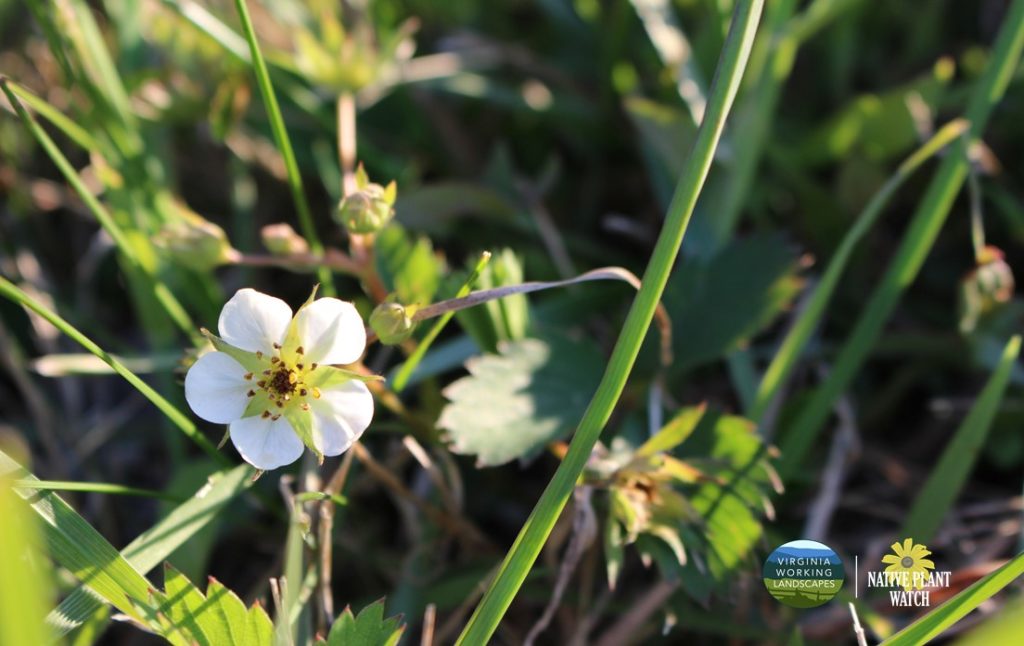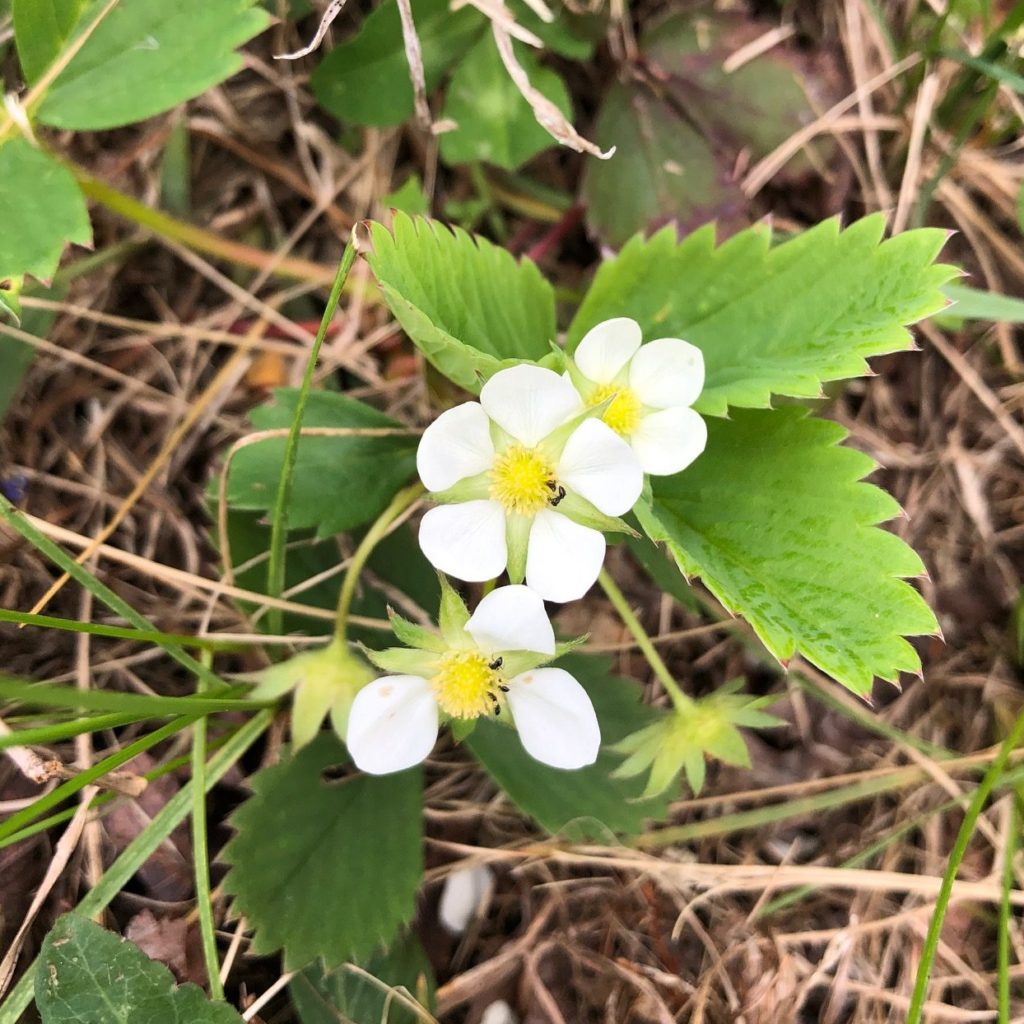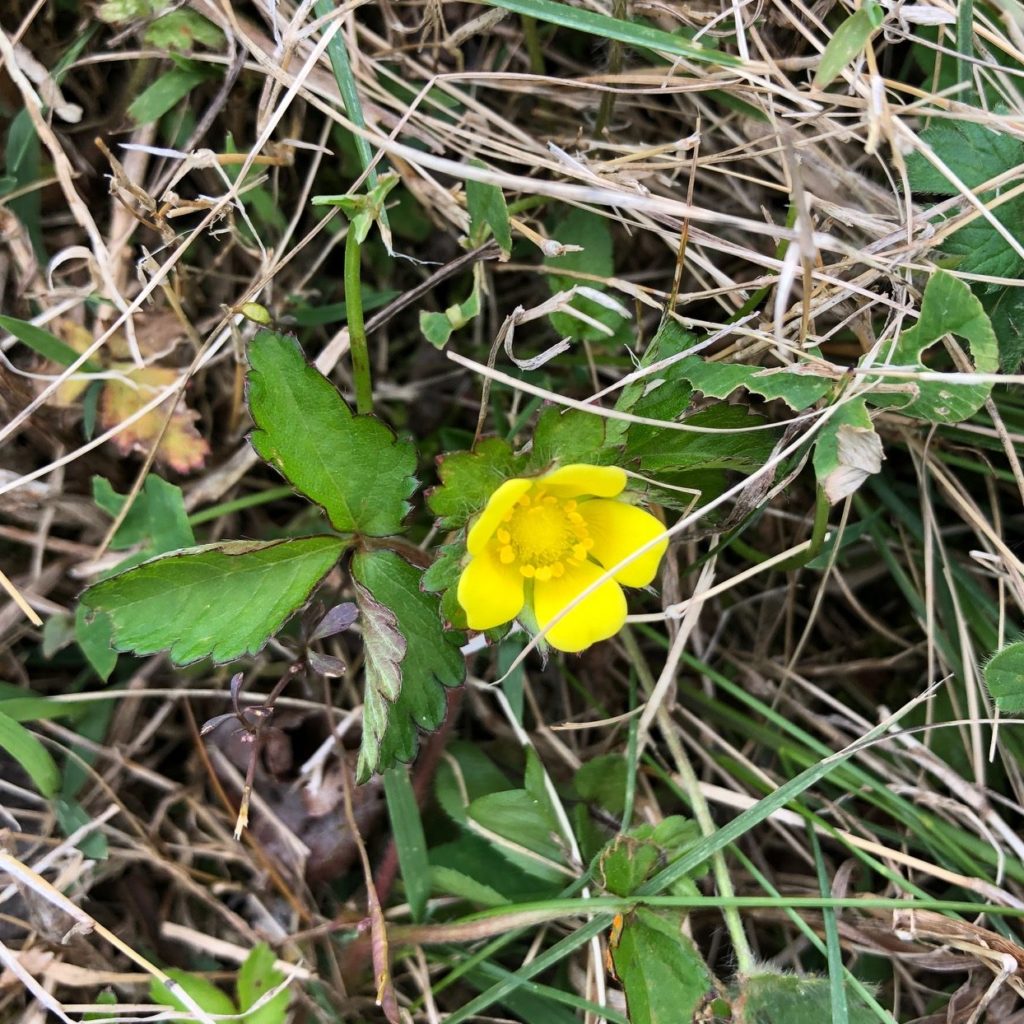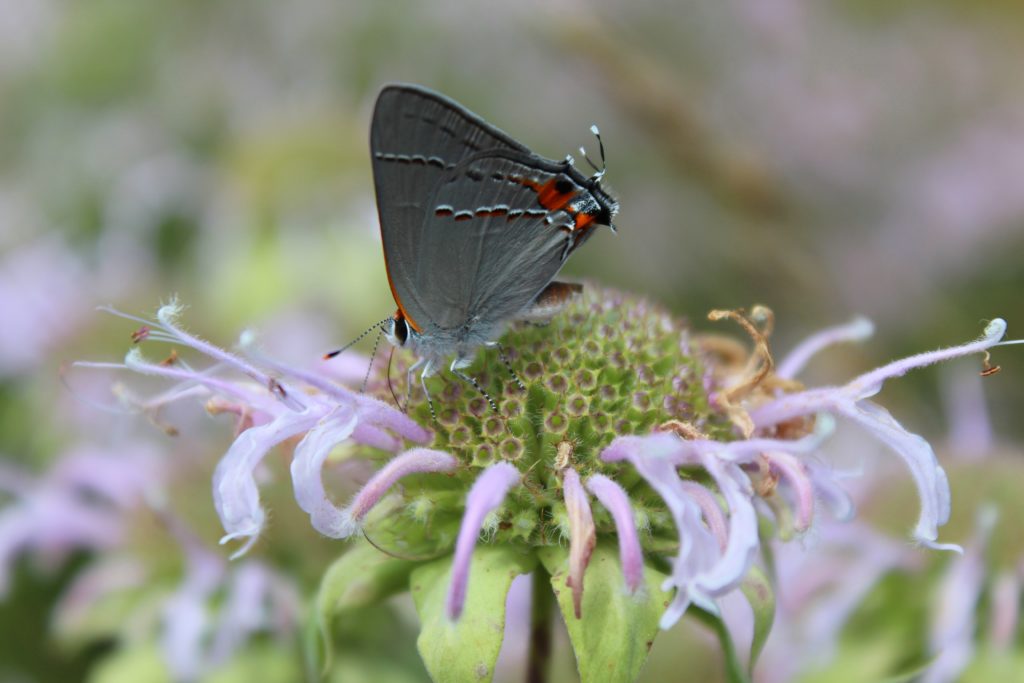
What’s in Bloom | Wild Strawberry
April 24, 2020
Wild Strawberry (Fragaria virginiana)*
Though most well known for its delicious tiny fruit, this plant is a true delight to find any time of year. Its small red fruits are much more flavorful than cultivated strawberries** (and in fact, cultivated strawberries were created by hybridizing this species and another from South America) and its white flowers are attractive to a variety of native bees and pollinators.
You can find it growing most often in old fields, meadows, pastures and open disturbed habitats though it can also be found in dry woodlands and forests.
Though not uncommon, this low growing ground cover can often be overlooked. It is also easily confused with its non-native look-alike, the Indian strawberry (Duchesnea indica or Potentilla indica). Sometimes referred to as the “mock or false strawberry,” D. indica is a common plant that likes to grow in disturbed soils, old fields, pastures, lawns and yes, gardens! It produces a small red fruit that resembles a strawberry but lacks any flavor.

F. virginiana 
D. indica
Value to Wildlife | F. virginiana produces a lovely white flower, characteristic of the rose family, that is an excellent resource for pollinators. We observed several different species of bee visiting the flowers while taking photos for this post, including sweat bees (Halictus spp.) and European honeybees (Apis mellifera). We also observed ants visiting the flowers.

According to research by Doug Tallamy, this plant is host to caterpillars from approximately 73 moth and butterfly species, including the gray hairstreak (Strymon melinus, pictured above). Check out this fun tool, Native Plant Finder, to learn which native plants in your area are great caterpillar hosts. Furthermore, the juicy fruits are a food source for wildlife such as song or gamebirds and box turtles.
Garden Friendly? | Yes! This plant makes an excellent groundcover and can be a popular choice in permaculture systems. Just be sure it is planted in well drained soil.
Identification in the Field | In the videos below, we will show you how to use the key in the Newcomb’s Wildflower Guide to identify the wild strawberry. We also filmed a second video to highlight the differences between the native strawberry and the non-native Indian strawberry.
Video 1: How to use Newcombs Wildflower Guide to ID Wild Strawberry
Video 2: Wild Strawberry vs. Indian Strawberry
*There is another strawberry native to Virginia called the Woodland Strawberry (Fragaria vesca). Though it looks quite similar to F. virginiana, there are several characteristics that distinguish the two strawberries, including notable differences in the fruit structure. Furthermore, you are far less likely to find Woodland Strawberry in Virginia. Though globally secure, it is ranked as S1 or critically imperiled in Virginia and only listed in 8 counties in Virginia in the Digital Atlas of the Virginia Flora.
**We do not recommend the ingestion of any plant without consulting multiple resources and being 100% certain of your identification.